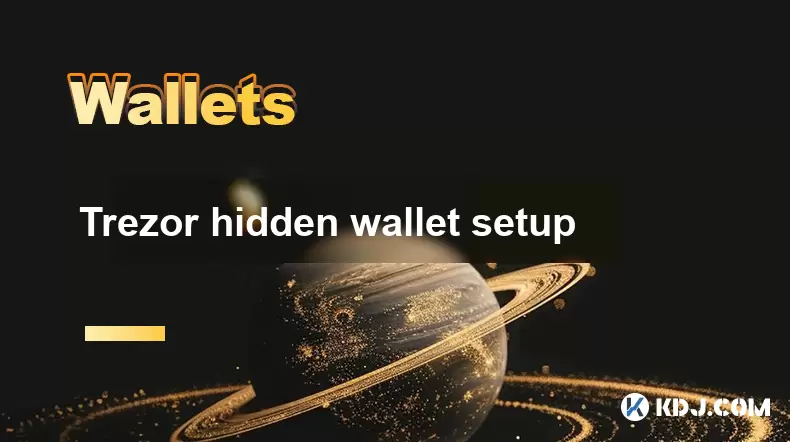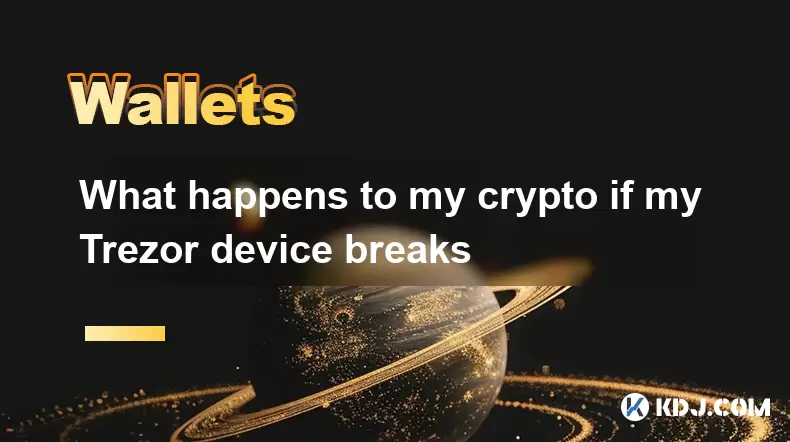-
 Bitcoin
Bitcoin $117,576.6195
-0.21% -
 Ethereum
Ethereum $2,938.5668
-1.35% -
 XRP
XRP $2.7699
4.60% -
 Tether USDt
Tether USDt $1.0003
0.01% -
 BNB
BNB $688.1624
-0.01% -
 Solana
Solana $160.5113
-1.95% -
 USDC
USDC $0.9999
0.01% -
 Dogecoin
Dogecoin $0.1976
-0.70% -
 TRON
TRON $0.3008
1.54% -
 Cardano
Cardano $0.7159
-2.16% -
 Hyperliquid
Hyperliquid $46.2240
2.04% -
 Stellar
Stellar $0.3966
22.03% -
 Sui
Sui $3.3928
-3.11% -
 Chainlink
Chainlink $15.1204
-2.43% -
 Bitcoin Cash
Bitcoin Cash $515.1741
-1.19% -
 Avalanche
Avalanche $20.8130
-0.90% -
 Hedera
Hedera $0.2001
-2.12% -
 UNUS SED LEO
UNUS SED LEO $9.0522
0.72% -
 Shiba Inu
Shiba Inu $0.0...01316
-2.01% -
 Toncoin
Toncoin $2.9843
0.61% -
 Litecoin
Litecoin $92.6745
-2.71% -
 Polkadot
Polkadot $3.9483
-0.06% -
 Monero
Monero $328.5347
1.10% -
 Dai
Dai $0.9998
0.01% -
 Ethena USDe
Ethena USDe $1.0006
-0.01% -
 Uniswap
Uniswap $8.3739
-6.50% -
 Bitget Token
Bitget Token $4.4241
-1.99% -
 Pepe
Pepe $0.0...01222
-3.96% -
 Aave
Aave $300.5203
-3.61% -
 Bittensor
Bittensor $382.2607
-1.92%
Trezor hidden wallet setup
Trezor Hidden Wallet lets users create a private crypto wallet using a unique passphrase, accessible only when entered correctly.
Jul 12, 2025 at 09:29 pm

What is a Trezor Hidden Wallet?
The Trezor Hidden Wallet feature allows users to create an additional layer of privacy by storing cryptocurrencies in a hidden wallet that exists separately from the primary wallet. This functionality is part of the Trezor Model T and some versions of the Trezor One, especially when used with the Trezor Suite software. The hidden wallet uses a different passphrase, which acts as a secret key to access this alternate wallet. When someone enters the wrong passphrase, they will only see the visible wallet, while the correct passphrase reveals the hidden one.
This feature is particularly useful for individuals who want to keep certain funds private or secure against coercion. The hidden wallet is not advertised or visible unless the correct passphrase is entered, making it a powerful tool for advanced security-conscious users.
How Does the Passphrase Work in a Hidden Wallet?
The passphrase in a Trezor Hidden Wallet functions as a secondary seed that transforms your original recovery phrase into a completely different wallet. It is important to understand that the passphrase is case-sensitive and can include letters, numbers, symbols, and spaces. Even a minor change in the passphrase will lead to a completely separate wallet address.
- Entering a unique passphrase during login creates a new wallet.
- The same passphrase will always generate the same hidden wallet.
- Different passphrases result in entirely unrelated wallets.
Because the passphrase is not stored anywhere on the device or in the software, it must be remembered or securely stored by the user. If you forget your passphrase, there's no way to recover the hidden wallet.
Step-by-Step Guide to Setting Up a Hidden Wallet on Trezor
Setting up a hidden wallet requires using the Trezor Suite application and following specific steps:
- Ensure your Trezor firmware is up to date.
- Open Trezor Suite and connect your device.
- Navigate to the Settings section within your wallet profile.
- Look for the "Advanced settings" option and enable the Passphrase protection feature.
- Disconnect and reconnect your device to apply the changes.
- On the Trezor screen, enter a custom passphrase when prompted.
- Confirm the passphrase entry directly on the device using its buttons.
After entering the passphrase, the Trezor will generate a new wallet derived from both your recovery phrase and the passphrase. You can now use this wallet independently from your main wallet.
It is crucial to test this setup before transferring any significant amount of cryptocurrency:
- Generate a receiving address in the hidden wallet.
- Send a small amount of crypto to verify accessibility.
- Repeat the login process to ensure the hidden wallet reappears with the correct passphrase.
Best Practices for Managing Your Hidden Wallet
Managing a hidden wallet involves more than just remembering a passphrase. Users should follow these best practices to maintain security:
- Store the passphrase separately from your recovery phrase. Never write them together.
- Consider using a password manager to store your passphrase securely.
- Avoid sharing the existence of your hidden wallet with anyone.
- Regularly check the hidden wallet balance and activity through trusted devices.
- Use a unique passphrase that isn't related to personal information or common words.
Since the hidden wallet is tied to your physical device, if your Trezor is lost or damaged, you can still recover the hidden wallet using the recovery phrase and the correct passphrase on another Trezor device.
Recovering a Hidden Wallet on a New Device
If you need to recover your hidden wallet on a new Trezor device, the process is similar to recovering a standard wallet but includes the passphrase step:
- Initialize the new Trezor device using your original recovery phrase.
- During setup, enable Passphrase protection in the advanced settings.
- After setting up the device, disconnect and reconnect it.
- Enter the correct passphrase when prompted on the device screen.
- The hidden wallet will appear in Trezor Suite once the correct credentials are confirmed.
It is essential to remember that the recovery phrase alone does not unlock the hidden wallet — the passphrase is required every time you wish to access it. Therefore, never store the passphrase in the same location as your recovery phrase.
Frequently Asked Questions
Q: Can I have multiple hidden wallets with different passphrases?
Yes, each unique passphrase generates a completely separate wallet. You can create as many hidden wallets as needed by using different passphrases during login.
Q: Is the hidden wallet feature available on all Trezor models?
No, the hidden wallet feature is primarily supported on the Trezor Model T. Some versions of the Trezor One also support it, but older firmware may not allow full functionality.
Q: What happens if I enter the wrong passphrase multiple times?
There is no limit to how many times you can attempt different passphrases. However, entering the incorrect passphrase simply shows a blank or empty wallet without revealing the hidden one.
Q: Can I use the hidden wallet with third-party wallets or apps?
While technically possible, it's not recommended unless you fully understand BIP39 passphrase derivation. Most third-party tools may not recognize the hidden wallet unless configured correctly with the exact passphrase and derivation path.
Disclaimer:info@kdj.com
The information provided is not trading advice. kdj.com does not assume any responsibility for any investments made based on the information provided in this article. Cryptocurrencies are highly volatile and it is highly recommended that you invest with caution after thorough research!
If you believe that the content used on this website infringes your copyright, please contact us immediately (info@kdj.com) and we will delete it promptly.
- Bitcoin Price's Golden Number: Analyst Predicts Massive Breakout!
- 2025-07-13 02:30:12
- XRP Price Breakout: Analysts Eyeing Explosive Moves
- 2025-07-13 02:50:12
- Grayscale, AI Crypto, and Top Assets: What's the Deal?
- 2025-07-13 02:55:11
- DOGE's $0.25 Ceiling: Will the Meme Coin Break Through?
- 2025-07-13 02:30:12
- Binance, Bloomberg, and a Lawsuit Threat: CZ's Fighting Back!
- 2025-07-13 01:30:12
- Litecoin, BONK, BlockDAG Presale: Navigating the Crypto Frenzy
- 2025-07-13 00:30:12
Related knowledge

What is a hardware wallet's secure element
Jul 11,2025 at 10:14pm
What is a Hardware Wallet's Secure Element?A hardware wallet is one of the most secure ways to store cryptocurrencies. Unlike software wallets, which ...

What is the difference between a custodial and non-custodial wallet
Jul 13,2025 at 03:21am
Understanding Wallet Types in CryptocurrencyIn the world of cryptocurrency, digital wallets play a crucial role in managing and securing assets. A wal...

How to add a new network to MetaMask
Jul 11,2025 at 11:42pm
Understanding the Need to Add a New NetworkWhen using MetaMask, a popular Ethereum-based cryptocurrency wallet, users often need to interact with diff...

How to add Ethereum L2 networks like Arbitrum to Trezor
Jul 11,2025 at 12:36am
What Is Ethereum L2 and Why Add It to Trezor?Ethereum Layer 2 (L2) networks, such as Arbitrum, are scaling solutions designed to reduce congestion on ...

What happens to my crypto if my Trezor device breaks
Jul 11,2025 at 01:49pm
Understanding Hardware Wallet FailureWhen you store cryptocurrency in a Trezor hardware wallet, the private keys are kept offline, offering a high lev...

How to find a specific receiving address on my Trezor
Jul 09,2025 at 10:36pm
Understanding the Purpose of a Receiving AddressA receiving address is a unique identifier used in blockchain networks to receive cryptocurrency. Each...

What is a hardware wallet's secure element
Jul 11,2025 at 10:14pm
What is a Hardware Wallet's Secure Element?A hardware wallet is one of the most secure ways to store cryptocurrencies. Unlike software wallets, which ...

What is the difference between a custodial and non-custodial wallet
Jul 13,2025 at 03:21am
Understanding Wallet Types in CryptocurrencyIn the world of cryptocurrency, digital wallets play a crucial role in managing and securing assets. A wal...

How to add a new network to MetaMask
Jul 11,2025 at 11:42pm
Understanding the Need to Add a New NetworkWhen using MetaMask, a popular Ethereum-based cryptocurrency wallet, users often need to interact with diff...

How to add Ethereum L2 networks like Arbitrum to Trezor
Jul 11,2025 at 12:36am
What Is Ethereum L2 and Why Add It to Trezor?Ethereum Layer 2 (L2) networks, such as Arbitrum, are scaling solutions designed to reduce congestion on ...

What happens to my crypto if my Trezor device breaks
Jul 11,2025 at 01:49pm
Understanding Hardware Wallet FailureWhen you store cryptocurrency in a Trezor hardware wallet, the private keys are kept offline, offering a high lev...

How to find a specific receiving address on my Trezor
Jul 09,2025 at 10:36pm
Understanding the Purpose of a Receiving AddressA receiving address is a unique identifier used in blockchain networks to receive cryptocurrency. Each...
See all articles

























































































